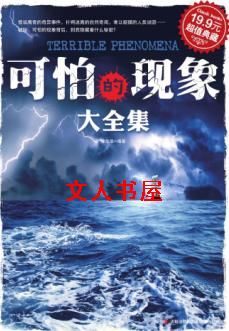英语语法大全-第7章
按键盘上方向键 ← 或 → 可快速上下翻页,按键盘上的 Enter 键可回到本书目录页,按键盘上方向键 ↑ 可回到本页顶部!
————未阅读完?加入书签已便下次继续阅读!
1)在否定句或疑问句中可用so…as。
Hecannotrunso/asfastasyou。
2)当as…as中间有名词时采用以下格式。
as+形容词+a+单数名词
as+many/much+名词
Thisisasgoodanexampleastheotheris。
Icancarryasmuchpaperasyoucan。。
3)用表示倍数的词或其他程度副词做修饰语时,放在as的前面。
Thisroomistwiceasbigasthatone。
Yourroomisthesamesizeasmine。
4)倍数+as+adj。+as 倍数+then+of
Thisbridgeisthreetimesaslongasthatone。
Thisbridgeisthreetimesthelengthofthatone。
Yourroomistwiceaslargeasmine。
Yourroomistwicethesizeofmine。
4。9比较级形容词或副词+than
YouaretallerthanI。
Theylightsinyourroomareasbrightasthoseinmine。
注意:
1)要避免重复使用比较级。
(错)Heismoreclevererthanhisbrother。
(对)Heismorecleverthanhisbrother。
(对)Heiscleverthanhisbrother。
2)要避免将主语含在比较对象中。
(错)ChinaislargerthatanycountryinAsia。
(对)ChinaislargerthananyothercountriesinAsia。
3)要注意对应句型,遵循前后一致的原则。
ThepopulationofShanghaiislargerthanthatofBeijing。
Itiseasiertomakeaplanthantocarryitout。
4)要注意冠词的使用,后有名词的时候,前面才有可能有名词。
比较:Whichislarge;CanadaorAustralia?
Whichisthelargercountry;CanadaorAustralia?
Sheistallerthanhertwosisters。
Sheisthetallerofthetwosisters。
4。10可修饰比较级的词
1)abit;alittle;rather;much;far;byfar;many;alot;lots;agreatdeal;any;still;even等
2)还可以用表示倍数的词或度量名词作修饰语。
3)以上词(除byfar)外,必须置于比较级形容词或副词的前面。
典型例题:
1) …………Areyoufeeling____?
…………Yes,I'mfinenow。
A。anywell B。anybetter C。quitegood
D。quitebetter
答案:B。any可修饰比较级,quite修饰原级,well的比较级为better。
2)Theexperimentwas____easierthanwehadexpected。
A。 more B。 muchmore C。 much
D。 moremuch
答案:C。 much可修饰比较级,因此B,C都说得通,但easier本身已是比较级,不需more,因此C为正确答案。
3)Iftherewerenoexaminations;weshouldhave___atschool。
A。thehappiesttime B。amorehappiertime
C。muchhappiesttime D。 amuchhappiertime
答案:D。
4。11many;old和far
1)如果后接名词时,muchmore+不可数名词
manymore+可数名词复数
2)old有两种比较级和最高级形式:older/oldest和elder/eldest。elder,eldest只用于兄弟姐妹的长幼关系。
Myelderbrotherisanengineer。
Maryistheeldestofthethreesisters。
3)far有两种比较级,farther,further。在英语中两者都可指距离。
在美语中,father表示距离,further表示进一步。
Ihavenothingfurthertosay。
4。12the+最高级+比较范围
1)TheSaharaisthebiggestdesertintheworld。
形容词最高级前通常必须用定冠词the,副词最高级前可不用。
形容词most前面没有the,不表示最高级的含义,只表示〃非常〃。
Itisamostimportantproblem。
=Itisaveryimportantproblem。
注意:使用最高级要注意将主语包括在比较范围内。
(错) Tomisthetallestofhisthreebrothers。
(对) Tomisthetallestofthethreebrothers。
2)下列词可修饰最高级,byfar;far;much;mostly;almost
Thishatisnearly/almostthebiggest。
注意:
a。 very可修饰最高级,但位置与much不同。
Thisistheverybest。
Thisismuchthebest。
b。 序数词通常只修饰最高级。
Africaisthesecondlargestcontinent。
3)句型转换:
Mikeisthemostintelligentinhisclass。
Mikeismoreintelligentthananyotherstudentsinhisclass。
4)〃否定词语+比较级〃,〃否定词语+so…as〃结构表示最高级含义。
Nothingissoeasyasthis。
=Nothingiseasierthanthis。
=Thisistheeasiestthing。
4。13和more有关的词组
1)themore…themore… 越……就越……
Theharderyouwork,thegreaterprogressyou'llmake。
2)moreBthanA 与其说A不如说B
lessAthanB
Heismorelazythanslowathiswork。
=Heislessslowthanlazyathiswork。
3)nomore…than…与……一样……,不比……多
TheofficialscouldseenomorethantheEmperor。
noless…than… 与……一样……
Heisnolessdiligentthanyou。
4)morethan 不只是,非常
Sheismorethankindtousall。
典型例题
1)TheweatherinChinaisdifferentfrom____。
A。inAmerica B。oneinAmerica C。America
D。thatinAmerica
答案:D。本题意为〃中国的天气比美国热。〃比较的是天气而不是国家,C不能选。A没有名词,后句成分不全,排除。B和D中,B中的one常用来代替可数名词,而that可车以代替不可数或抽象名词,所以选D。
2)Afterthenewtechniquewasintroduced,thefactoryproduced___tractorsin1988astheyearbefore。
A。astwicemany B。asmanytwice C。twiceasmany D。twicemanyas
答案C。此句意为〃这个厂1988能生产的拖拉机是往年的两倍〃。表示倍数用〃倍数+as+形容词原形+as+比较对象〃的句型。所以此句答案为C。
Thisruleristhreetimesaslongasthatone。
5。动词
1)表示动作中状态的词叫做动词。
2)根据其在句中的功能,动词可分为四类,分别是:实义动词(NotionalVerb)、系动词(LinkVerb)、助动词(AuxiliaryVerb)、情态动词(ModalVerb)。
说明:有些情况下,有些动词是兼类词,例如:
Wearehavingameeting。 我们正在开会。 (having是实义动词。)
HehasgooNewYork。 他已去纽约。
(has是助动词。)
3)动词根据其后是否带有宾语,可分为两类,分别是:及物动词(TransitiveVerb)、不及物动词(IntransitiveVerb),缩写形式分别为vt。和vi。。
说明:同一动词有时可用作及物动词,有时可用作不及物动词。例如:
Shecandanceandsing。
她能唱歌又能跳舞。(sing在此用作不及物动词。)
ShecansingmanyEnglishsongs。
她能唱好多首英文歌曲。(sing用作及物动词。)
4)根据是否受主语的人称和数的限制,可分两类,分别是:限定动词(FiniteVerb)、非限定动词(Non…finiteVerb)例如:
Shesingsverywell。
她唱得很好。(sing受主语she的限制,故用第三人称单数形式sings。)
ShewantstolearnEnglishwell。
她想学好英语。(tolearn不受主语she的限制,没有词形变化,是非限定动词。
说明:英语中共有三种非限定动词,分别是:动词不定式(Infinitive)、动名词(Gerund)、分词(Participle)。
5) 根据动词的组成形式,可分为三类,分别是:单字词(One…WordVerb)、短语动词(PhrasalVerb)、动词短语(VerbalPhrase)例如:
TheEnglishlanguagecontainsmanyphrasalverbsandverbalphrases。
英语里有许多短语动词和动词短语。(contains是单字动词。)
Studentsshouldlearntolookupnewwordsindictionaries。
学生们学会查字典。(lookup是短语动词。)
Theyoungoughttotakecareoftheold。
年轻人应照料老人。(takecareof是动词短语。)
6)动词有五种形态,分别是:原形(OriginalForm)、第三人称单数形式(SingularFrominThirdPersonal)、过去式(PastForm)、过去分词(PastParticiple)、现在分词(PresentParticiple)。
5。1系动词
系动词亦称联系动词(LinkVerb),作为系动词,它本身有词义,但不能单独用作谓语,后边必须跟表语(亦称补语),构成系表结构说明主语的状况、性质、特征等情况。
说明:
有些系动词又是实义动词,该动词表达实义时,有词义,可单独作谓语,例如:
Hefellillyesterday。
他昨天病了。(fell是系动词,后跟补足语,说明主语情况。)
Hefellofftheladder。
他从梯子上摔下来。fell是实义动词,单独作谓语。
1)状态系动词
用来表示主语状态,只有be一词,例如:
Heisateacher。 他是一名教师。(is与补足语一起说明主语的身份。)
2)持续系动词
用来表示主语继续或保持一种状况或态度,主要有keep;rest;remain;stay;lie;stand;例如:
Healwayskeptsilentatmeeting。 他开会时总保持沉默。
Thismatterrestsamystery。 此事仍是一个谜。
3)表像系动词
用来表示〃看起来像〃这一概念,主要有seem;appear;look;例如:
Helookstired。 他看起来很累。
Heseems(tobe)verysad。 他看起来很伤心。
4)感官系动词
感官系




